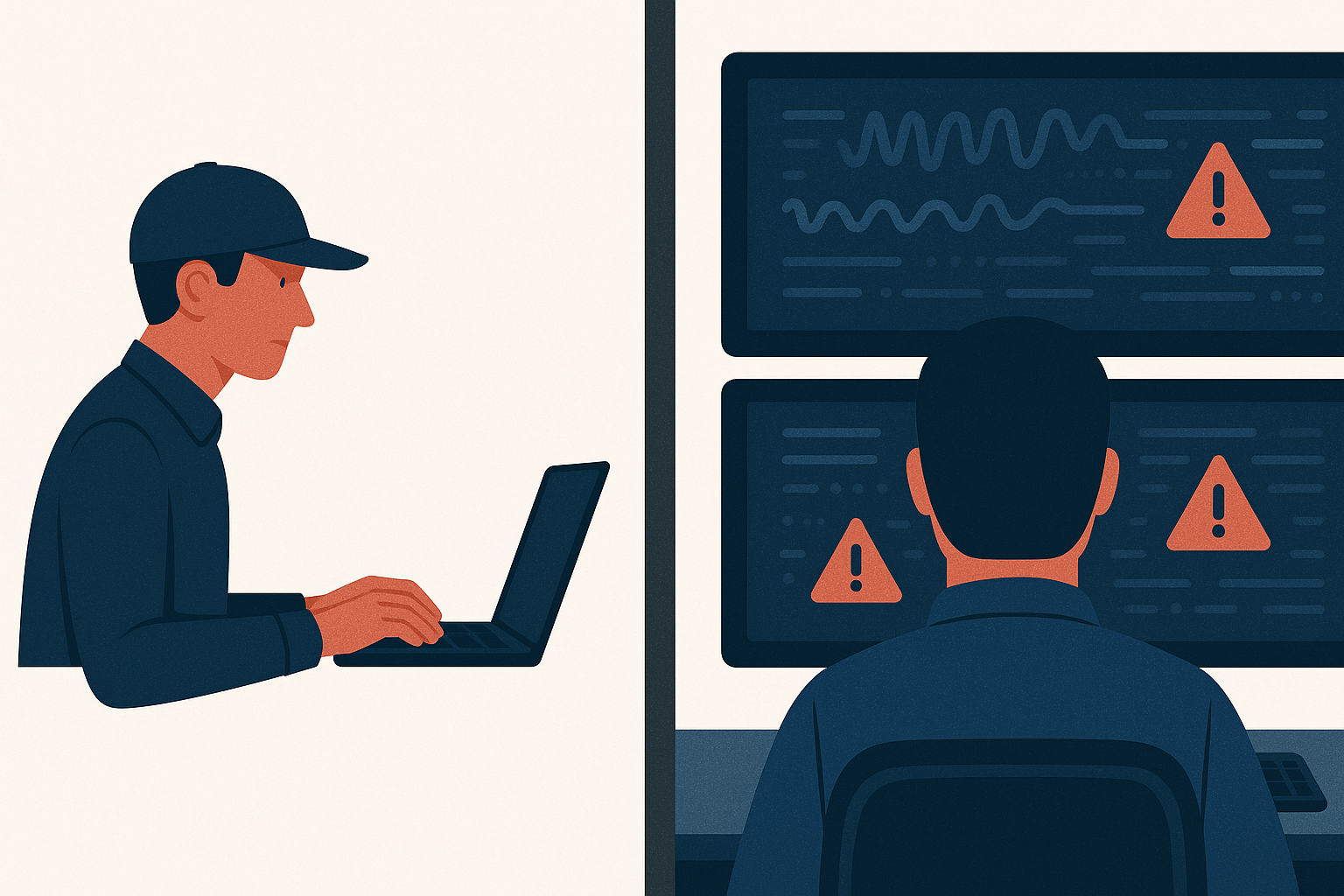
In the evolving landscape of cyber threats, businesses must continuously evaluate their security postures to protect sensitive data and maintain trust. One effective method is External Penetration Testing (EPT), a controlled and simulated attack against an organization’s external network to expose vulnerabilities and weaknesses. This guide will provide a comprehensive overview of EPT, outlining its importance, methods, tools, and the steps needed to implement a strong cybersecurity framework.
What is External Penetration Testing?
External Penetration Testing focuses on simulating cyberattacks on systems that are publicly accessible over the internet. These may include web servers, email gateways, VPNs, firewalls, and cloud-based services. The aim is to assess the external vulnerabilities that could provide unauthorized access to sensitive data or internal systems without requiring internal access.
The concept of network security testing through EPT is crucial because attackers frequently target organizations' external-facing assets. Since external systems are the first line of defense, any overlooked security weaknesses can lead to unauthorized intrusions. By conducting EPT, businesses can uncover and address potential vulnerabilities before they are exploited in a real attack.
Who Needs External Penetration Testing?
Every organization with an online presence should conduct regular External Penetration Testing, regardless of its size or industry. However, the specific need for EPT may vary based on an organization's size, resources, and risk profile:
Small and Medium-Sized Businesses (SMBs). For SMBs, EPT is a cost-effective way to ensure their systems are secure without needing to build a large internal cybersecurity team. Since smaller businesses are increasingly targeted by attackers due to perceived weaker defenses, network penetration testing for SMBs is a vital measure for protecting both data and customer trust.
Large Enterprises. Larger organizations often have more complex networks and more valuable data at risk. External attack surface protection is critical for enterprises as they often manage multiple online services, public-facing websites, and remote access systems, all of which could be potential entry points for attackers. For these companies, regular EPT is part of a broader security strategy, complementing other tests like internal penetration tests and red team assessments.
Highly Regulated Industries. Businesses in sectors like finance, healthcare, and government must adhere to strict data protection and privacy regulations. External Penetration Testing helps ensure that they comply with industry standards like GDPR, HIPAA, or PCI-DSS, reducing the risk of regulatory fines and breaches.
The Importance of External Penetration Testing
The internet is full of threats, from cybercriminals to nation-state actors. These external threats often exploit vulnerabilities in outward-facing systems, meaning any weak point can become an entryway into an organization’s network. External Penetration Testing plays a crucial role in identifying these vulnerabilities before attackers can exploit them.
Regular Testing as a Preventive Measure
In a constantly evolving threat landscape, security is never static. Vulnerabilities may emerge due to software updates, misconfigurations, or changes in infrastructure. Regular cybersecurity assessments, including EPT, allow organizations to stay ahead of potential breaches by identifying weaknesses and addressing them in real-time.
Data Breaches and Financial Loss.
The cost of a data breach is often far greater than the expense of regular penetration testing. Financial repercussions from stolen customer data, intellectual property, or trade secrets can be catastrophic, particularly for SMBs. Moreover, the reputational damage from a publicized breach could take years to recover.
Compliance and Legal Requirements.
Many industries require regular security audits and testing to comply with regulations. Conducting EPT regularly helps organizations maintain compliance with standards such as ISO 27001, PCI-DSS, and NIST, ensuring that they are not only secure but also meeting legal obligations.
Possible Threats Detected by EPT
External Penetration Testing detects various types of weaknesses that could lead to unauthorized access or data theft. These threats include:
Weak passwords. Attackers often use password guessing or brute-force attacks to gain access to externally accessible systems. EPT can detect poor password policies or easily guessable passwords.
Open ports. Unnecessary or unprotected open ports expose an organization to potential attacks. EPT scans for open ports to identify those that may allow unauthorized access.
Misconfigurations. Configuration errors in web applications, servers, or firewall settings are common sources of vulnerabilities. These misconfigurations can leave sensitive data exposed or grant attackers more access than intended.
Outdated software. Failing to update software and systems regularly leaves businesses vulnerable to known exploits. EPT helps identify outdated systems that could be exploited using publicly available methods.
By identifying these and other threats, external threat assessments can dramatically reduce the chances of a successful attack on a business’s network.
Key Stages of External Penetration Testing
Understanding the process of External Penetration Testing is critical for ensuring the test’s effectiveness. A typical EPT is broken down into several stages, each playing a vital role in uncovering and addressing security risks:
Planning. Defining the scope and objectives of the test is crucial. The testing team should collaborate with the client to determine which systems, IP addresses, and domains will be tested. Legal considerations and permissions are secured to avoid any issues during the test.
Reconnaissance. This phase, also known as information gathering, involves collecting as much data as possible about the target organization from publicly available sources. This could include analyzing domain name records, DNS records, and gathering open-source intelligence (OSINT).
Scanning. During this stage, penetration testers use network vulnerability scanners to map the target’s external infrastructure and identify open ports, services, and other potential entry points. Automated tools like Nmap and Nessus are often employed to conduct a broad scan of the network and pinpoint weaknesses.
Exploitation. The exploitation phase involves the practical application of attacks on identified vulnerabilities. Using tools like Metasploit, penetration testers attempt to exploit weaknesses in systems, simulating real-world cyberattacks.
Reporting. Once the testing is complete, the findings are documented in a detailed report. The report will include the vulnerabilities discovered, the potential impact, and recommendations for mitigation.
Reconnaissance and Information Gathering
This initial phase lays the groundwork for a successful penetration test. Testers gather data about the target using both passive and active methods. Passive methods involve examining public-facing systems without interacting with them directly. Active reconnaissance involves interacting with the target's systems, such as pinging servers or checking for live hosts.
Scanning and Vulnerability Analysis
Scanning allows testers to assess the external attack surface more comprehensively. They use tools like Nessus and OpenVAS to identify possible weaknesses such as unpatched systems, open ports, and misconfigured services. This phase provides essential insight into the organization’s security posture and identifies potential entry points for exploitation.
Methods and Tools Used in External Penetration Testing
Conducting External Penetration Testing requires specialized tools and techniques that help penetration testers map out the target network and identify vulnerabilities. The tools used in EPT can be divided into two main categories: automated scanning tools and manual exploitation tools.
Tools for Automated Scanning
Automated scanners play a key role in identifying a broad range of vulnerabilities quickly and efficiently. These tools are often the first step in the scanning process, providing testers with a high-level overview of the target's security weaknesses.
Nmap. This widely used network mapper is essential for discovering open ports and services on external networks. Its versatility allows testers to gather information about the target’s IP addresses and firewall configurations.

Nessus. A vulnerability scanner that is used to detect known vulnerabilities, such as missing patches or improper configurations. Nessus is particularly effective in assessing the network security of large organizations.

OpenVAS. An open-source alternative to Nessus, OpenVAS is used for conducting detailed vulnerability analysis. It scans for known vulnerabilities in operating systems, applications, and configurations.

Tools for Exploiting Vulnerabilities
Once vulnerabilities are identified, manual exploitation tools allow penetration testers to simulate attacks and assess the potential impact of these weaknesses.
Metasploit. A leading penetration testing tool that provides a framework for launching and automating attacks. Metasploit enables testers to simulate a wide range of cyberattacks, from buffer overflows to brute-force attempts, against known vulnerabilities.

Burp Suite. A tool widely used for testing the security of web applications. It allows penetration testers to identify and exploit vulnerabilities such as SQL injection, cross-site scripting (XSS), and session hijacking.

By combining these tools with manual expertise, testers can conduct in-depth analyses of external threats, providing organizations with comprehensive insights into their security vulnerabilities.
Reporting the Results of External Penetration Testing
After conducting an External Penetration Test, the results are compiled into a detailed report that provides organizations with a clear understanding of their external vulnerabilities and the associated risks.
Format and Structure of the Report
The final report should include the following sections:
Executive Summary. A high-level overview for non-technical stakeholders that outlines the test’s objectives, major findings, and high-priority recommendations.
Technical Findings. A detailed breakdown of all vulnerabilities discovered, ranked by severity, with descriptions of the potential impact on the organization.
Risk Assessments. A risk assessment chart prioritizing vulnerabilities based on their severity and likelihood of exploitation.
Recommendations for Mitigation. Actionable steps for addressing each vulnerability. This may include applying patches, closing unnecessary ports, or revising security configurations.
Choosing an External Penetration Testing Provider
When selecting a penetration testing provider, organizations should consider several factors to ensure they receive a high-quality, comprehensive test. These include:
Experience and Certifications. The testing team should have experience working in the organization’s industry and hold relevant certifications, such as OSCP (Offensive Security Certified Professional) or CEH (Certified Ethical Hacker).
Methodologies Used. The provider should follow recognized standards for penetration testing, such as the OWASP Testing Guide or NIST Penetration Testing Guidelines.

Post-Test Support. After the test is complete, the provider should offer guidance on remediation efforts and be available for follow-up consultations.
Advantages and Challenges of External Penetration Testing
✅ Advantages
External Penetration Testing offers several key benefits for organizations looking to enhance their cybersecurity posture:
Vulnerability Identification.
EPT helps in detecting vulnerabilities before malicious actors exploit them. By simulating real-world attacks, organizations can uncover weaknesses in their systems, applications, and network configurations that could be targeted by cybercriminals.
Enhanced Network Security.
Regular penetration testing allows organizations to strengthen their security measures, ensuring that they are well-prepared to defend against potential breaches. By addressing the identified vulnerabilities, organizations can bolster their defenses and reduce the overall risk of cyberattacks.
Regulatory Compliance.
Many industries are subject to regulatory requirements that mandate regular security assessments. EPT can help organizations meet these compliance standards, avoiding potential fines and reputational damage.
Improved Incident Response.
The insights gained from penetration testing can inform and enhance an organization’s incident response plans. Understanding potential attack vectors allows organizations to prepare and respond more effectively to security incidents.
🚫 Challenges
Despite its advantages, there are challenges associated with External Penetration Testing:
Cost of Services.
Engaging professional penetration testing services can be expensive, especially for small and medium-sized businesses (SMBs). Organizations must carefully evaluate their budgets and the potential return on investment from conducting regular penetration tests.
Risk of Unqualified Contractors.
The cybersecurity industry has seen a surge in the number of service providers. This increase can lead to the risk of hiring unqualified or inexperienced testers who may not deliver reliable results. Organizations should conduct thorough due diligence when selecting a penetration testing provider.
Need for Highly Skilled Professionals.
Effective penetration testing requires skilled professionals with a deep understanding of network security, vulnerabilities, and exploitation techniques. The demand for such experts often exceeds supply, making it challenging for organizations to find qualified personnel.
Conclusions
In conclusion, External Penetration Testing is a crucial element of securing your company. By identifying vulnerabilities and enhancing network protection, you significantly reduce the risk of cyberattacks. However, it’s important to approach this process with a trusted partner.
A42.tech is here to ensure your business stays protected. Our expert team will help you uncover potential weaknesses and strengthen your security posture. Whether you're looking to order a penetration test or simply need a consultation, A42.tech provides the tailored solutions you need to safeguard your company against evolving threats.
Discover vulnerabilities before hackers find them with A42.tech. Don’t leave your security to chance—get in touch with us today to protect your business and minimize risks before they turn into problems.




